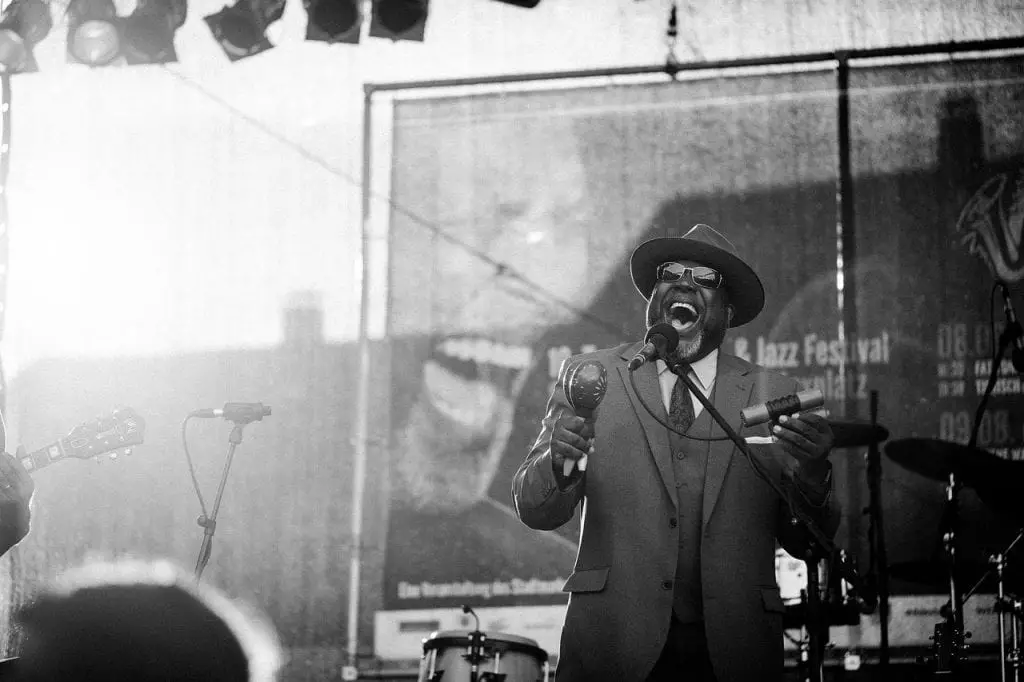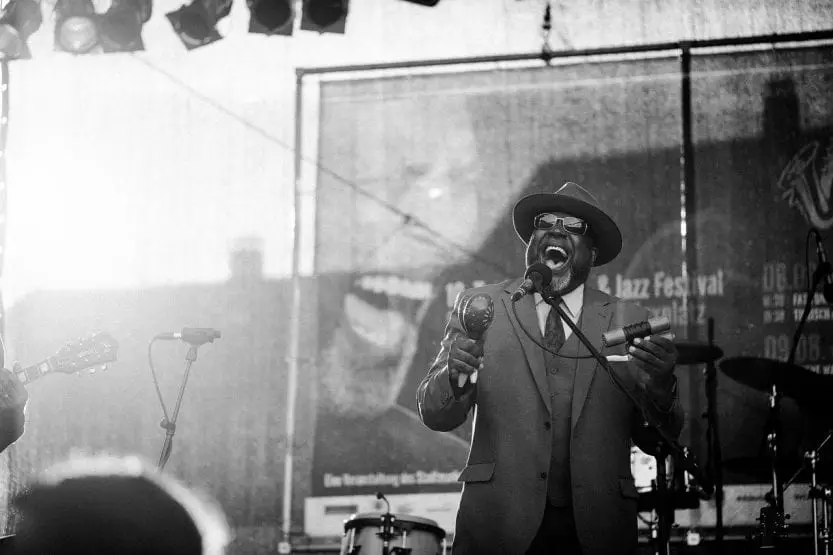The genre Blues is a combination of African and American styles of music that has traversed a very wide range of human emotions and popular musical styles. The popular term “Feeling blue” is often expressed in songs. They musical style chooses to lament about injustice or the longing of a better and beautiful life. Things that are blue are often associated with bouts of sadness such as long lost loves, loosing job or money. However, blues is also a very dynamic style of music. It also serves as a raucous style of dance music which celebrates the fine pleasure and success of life. The central idea that’s built around blues is that by performance and/or listening to the things that are blue, a person is able to overcome the blues of life.
A formal identifying trait of everything blue is the popular “blue notes”. These are a typical three-line AAB form of verse along with the familiar use of the infamous “blues” chord progression. Over the years the immense popularity of everything blues directly correlates with the growth of the commercial recording industry. The inception of “Race” record was specifically aimed at the American Black population buying records. Post 1920, the emigration of the rural black Americans of the south to the urban American cities of the North. This led to a surge in black American singing stars. Most of the early black American who started recording were the blues singers.
Classic Blues was the very first blues song to have been recorded. It was influenced by jazz in a vaudeville style. The song was sung by a famous blues women(as she was popularly called) Gertrude Rainey along with Bessie Smith and several others. The blue ensemble would often be accompanied by piano, guitar and other smaller jazz style combinations.
History of The Blues Music

Blues is a genre that is more than 100 years old. All the things that are blue and the journey of the genre can be traced back to Africa. Specifically to West Africa where it began as an idea to the deep South of Africa. Blues traveled to the urban centers of norther United States from where it fused directly onto the then popular rock ‘n’ roll and rhythm & blues styles.
However, all things blue kept evolving over time, one particular style of blues never could completely eclipse all other evolving styles as time went by. That is the older more classic form of blues, that have persisted. The classic style of blues have often seen revivals and surging in popularity every decade. To know more about the history of blues a well-made and extensive documentary by the ‘Screaming Blue Dogs’ called “The Different Types of Blues Music”.
What is the sole true origin of the blues music? It is hard to know for sure, considering that there are major gaps in the documentation of everything blues and the actual history is never ever perfectly linear. But the “Sitting at the Foot of the Blues” is a good source for some really useful information pertaining to why the blues came to be known as the blues all along. The article also feature some great insight into the world of blues and how the earliest blues music sounded like.
In order to know the history of the beginning of blues, we begin with the African American slaves from where the history of blues start.
The African-American Beginnings of Everything Blue
As with all things beautiful, the initial beginning of blues as a music was mired by sadness and depression. The blues genre was originated during the disturbed pre-Civil War time era in the southern states of the United States. The idea of blues was characterized by the African American labor class like field hollers, spiritual worshipers of the slave and work songs by the mistreated African American slaves who were struggling. Blues was a means for them to express their conscious human thoughts and share their emotions in the midst of the subhuman oppression.
These slaves as they migrated had brought along with them their distinct rhythms and the musical sensibilities and styles local to the grasslands of western Africa. Their music together echoed with them the above said key features of the style of music created by their foregone ancestors. Some of the distinct styles include the use of:
- The popular pentatonic type of scales with a characteristic special tuning
- A sense of a conversational element, namely ideas like call to action or response)
- The typical blues improvisation
- use of complicated polyrhythms in their composition
As the migrating Africans encountered with the extravagant European styles of musical traditions in the land of United States, it resulted at attempts of fusion. The Africans started to twist the typical European scales of the instruments to their African scales. This fusion resulted in a bending and sliding of the common pitches which thereby led to the now popular blues scales.
The western Africa based musicians would often engage in a specialized sort of musical dialogue. These styles were mostly improvised or partially improvised which forms the deep rooted tradition of the African musical standards. These particular feature found prominence in things that are blue, its music and performance. Some examples would follow even solo performances of a singer and an intimate performance with a guitar or the more dynamic and complex setting of a blues band.
The complex and fluidic improvisation of rhythms formed and formulated the early expressions of blues and dominates the genre up to this day
The Form of Everything Blue
Typically a blues music imbibes instrumental as an accompany which is largely universal in its acceptance for blues. But blues is of vocal in nature and form in its most essential type. The typical Blues style and songs are often lyric (driven) than the common narrative style.
The core of a blues singer revolves around the expression of inner emotion and feeling and a far cry from a storytelling style. The general emotion as expressed are of melancholy or sadness which was a center point of the history of the music. The most common lyrical style of blues derive its inspiration from problems in love.
In order to express the sadness musically, a typical blues performer would use various vocal techniques. This different techniques are –
- Melisma – the art of sustaining a single syllable across several pitches
- Syncopation – a style of rhythmic variation
- Choking and Bending – Types of instrumental techniques which uses sliders and metal elements. Idea is to bend the guitar strings to create a human voice like pitching effect
As a style of music, things that are blues are often characterized as an expressive form of the “blue notes”. These are essentially a form of micro-tonal pitch inflected. The typical blues would follow a three-line text based stanza in the form of AAB with atypical 12-measure form.
A typical blues song would consist of the initial two and a half measure of lines as completely devoted to the vocalist singing. The remaining measure and a half would consist of a break with a solo instrumental which would often complement, answer or repeat with the ongoing vocal line.
If we consider the more functional terms of music which is quintessential to the traditional European form of harmony, African influences are apparent in the blues tonality. The call to action and response pattern which is often repeated in compositions correspond to a typical structure of a blues stanza. The different vocal styles with falsetto induced breaks is direct representation of imitating string instruments in its core. This results in a blend of vocal and instrument which is very intimate in nature. This reflects a bond between the vocal and the instruments which is unlike anything seen in any other style.
The Early Urban Roots Of Blues
Among the cities where blues found acceptance and took roots in the urban United States, the most common names included St. Louis, Memphis and Atlanta. Popular artists like John Lee Hooker who was staying in Detroit, developed a ground there. On the western coast, T Bone Walker, another blues legend developed his own unique style which were greatly inspired by the legendary B.B King.
The city of Chicago is credited with being the hub which catapulted blues into the urban scene and developed into a cult of a style. Between 1920 to 1935, the Chicago blues scene was hosting legends like the Tampa Red, Sonny Boy Williamson, Memphis Minnie and the Big Bill Broonzy among others. They had popularized the style among the Chicago youths. Post the second world war, the mantle of blues was taken forth by another set of greats. These included the likes of Koko Taylor and Elmore James, Muddy Waters and Buddy Guy, Howlin’ Wolf and Little Walter Jacobs among others. The early blues scene of the 50’s and 60’s were said to be the golden period for blues with a plethora of artists that kept growing its fan base.




